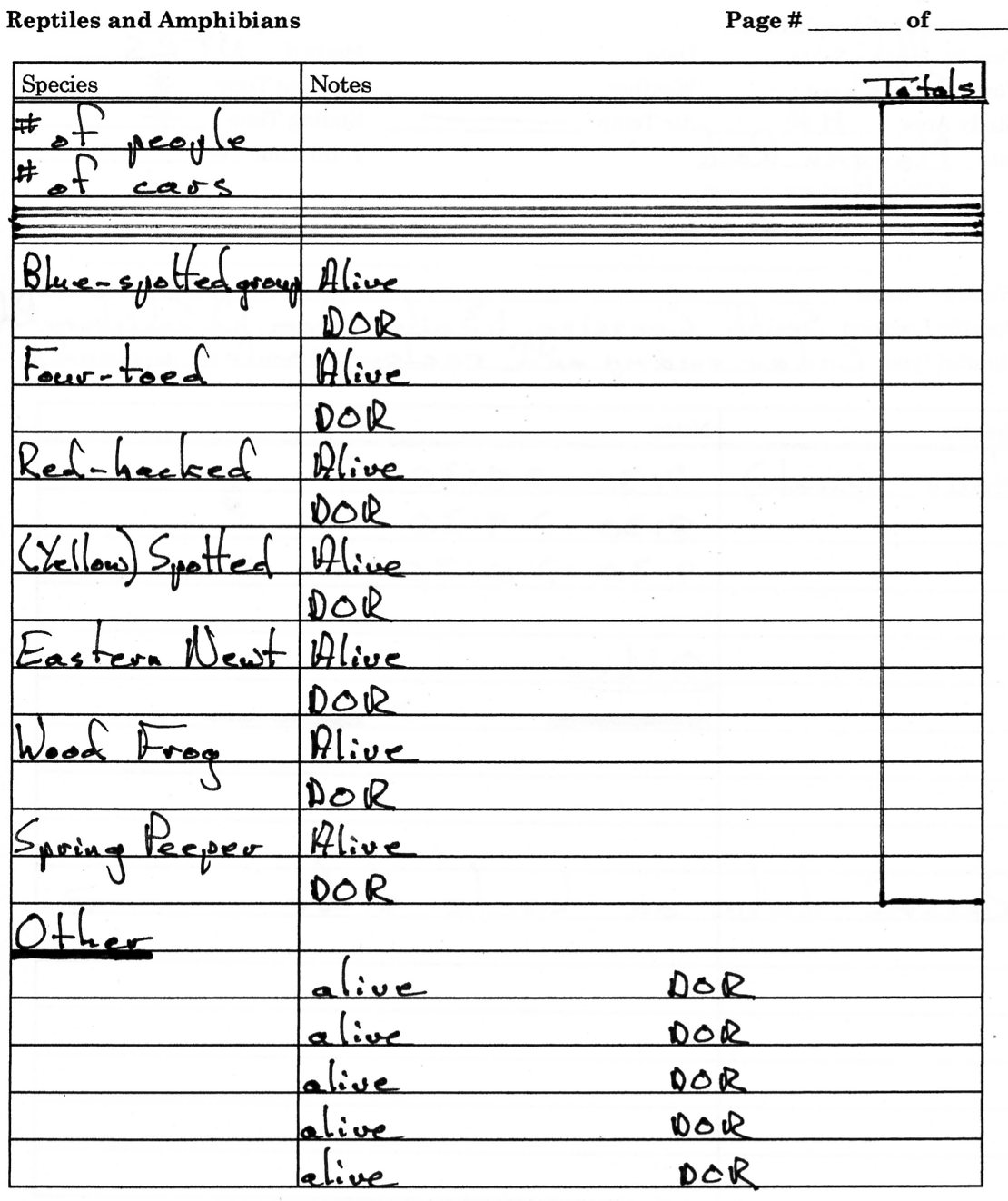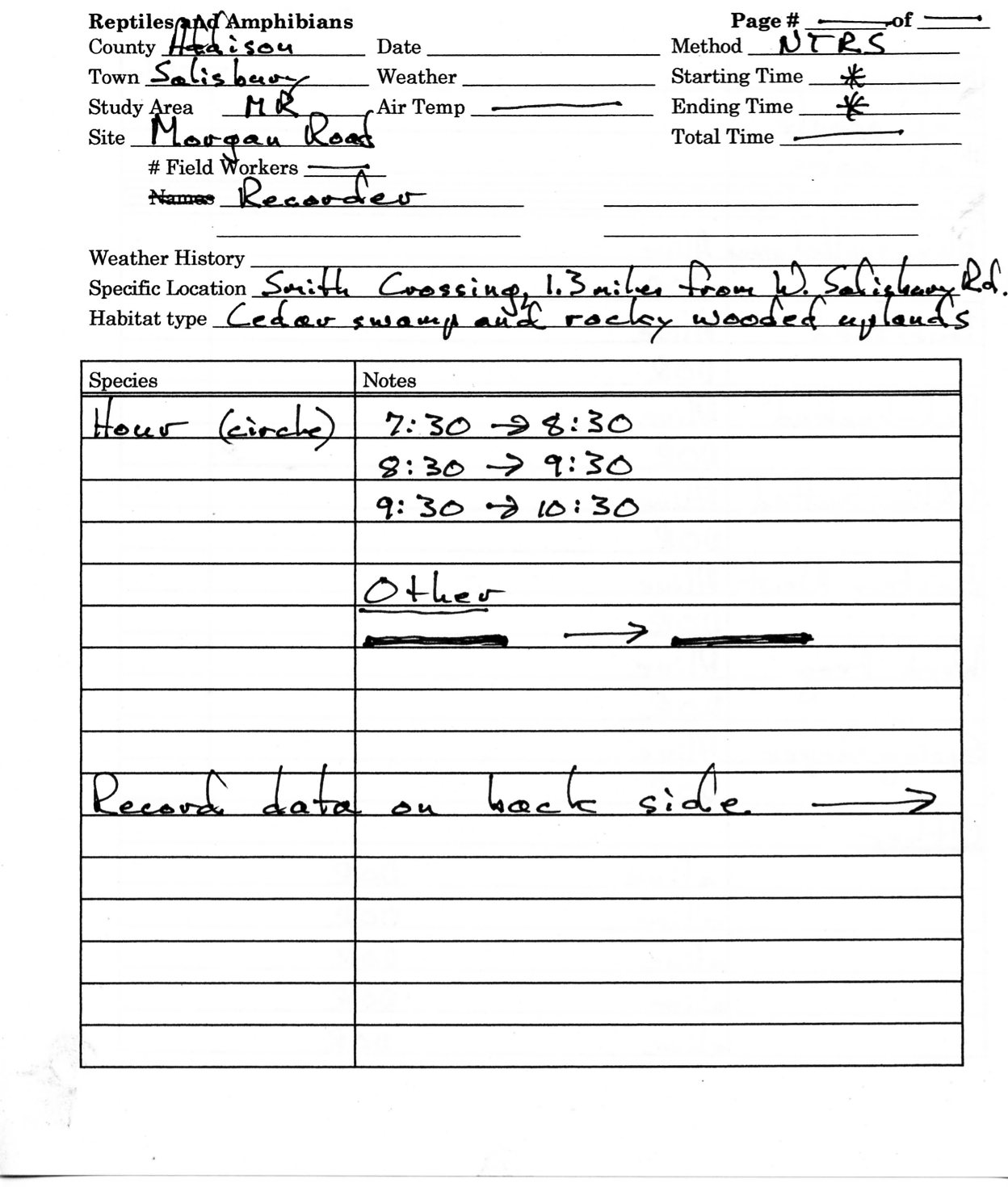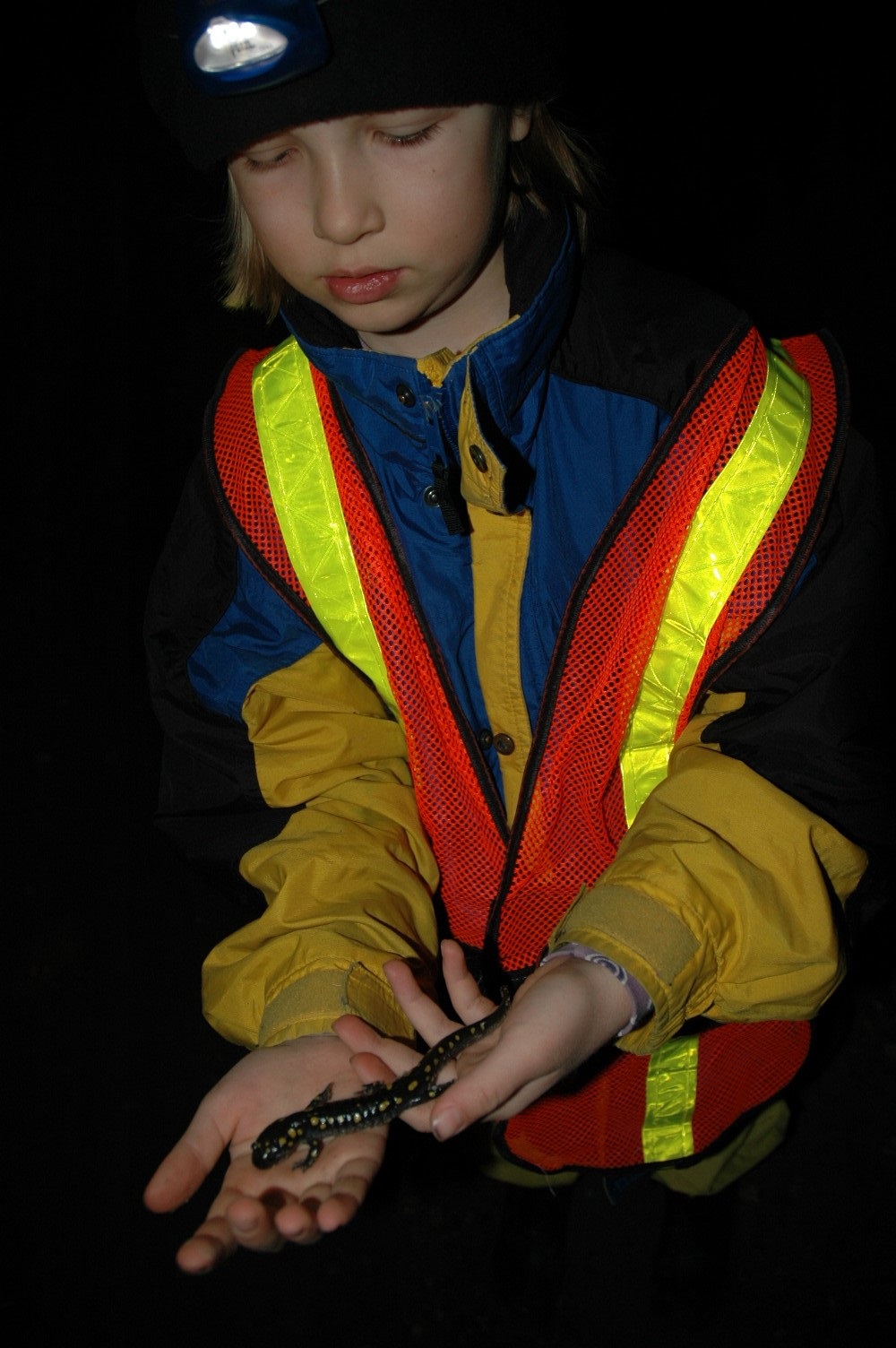Amphibian Road Crossing at Morgan Road, Salisbury, Vermont
Prior to 2003, Morgan Road in Salisbury, Vermont was a seemingly average backroad, that is until the importance of its adjacent amphibian habitat was discovered. James Andrews found that there was a very large migration of amphibians that took place across Morgan Road. The number of species, diversity of species present, and the rarity of these species is what makes this crossing area significant. The Salisbury Conservation Commission partnered with the Otter Creek Audubon to establish amphibian crossing nights.
During warm, rainy nights in March and April amphibians in this area are migrating from their overwintering grounds to breeding pools located along the margins of the Salisbury Swamp. When conditions look right for these mass amphibian movements, emails are sent out to volunteers interested in assisting amphibians cross Morgan Road. During these peak migration nights, amphibians will move in groups in the hundreds to thousands. Species encountered by volunteers during past events include: blue-spotted salamanders, four-toed salamanders, spotted salamanders, red-backed salamanders, wood frogs, and spring peepers.
At many other sites, amphibians are highly vulnerable to road mortality, and thus crossing nights are life-saving events for these species' populations. At Morgan Road, road mortality is less of a concern because road traffic is typically low. Low traffic on this road makes it a great educational site because parents can feel safe bringing their children to participate. When amphibian crossing nights occur on a weekday, typically five to ten participants turn up, whilst on a weekend, upwards of 30 volunteers have participated.
When volunteers arrive at the site they are greeted by the 'greeter' who welcomes visitors, explains the safety rules (for amphibians and humans), and guides each volunteer to James Andrews, who then informs the volunteer on how the data is being collected and how to identify various amphibian species. Each volunteer keeps track of how many of each species were encountered, both dead and alive. Volunteers report species counts to hosts carrying a clipboard; typically there are three hosts whose duties are to collect volunteers' species counts. At the end of the night, all data is given to James Andrews to compile in a database which contains the information from every amphibian event to date. Additionally, at each event data is collected on number of volunteers present, duration of the event, and the number of cars which drove by. Typically, events last around two hours.
Ultimately, at some of the most significant amphibian-crossing sites around the state, underpasses will need to be constructed in order to maintain populations of these species. In order to evaluate the relative significance of a crossing location and determine the need for an underpass or influence a change in transportation patterns, data on how many amphibians are crossing (number of individuals per time period), what those species are, and how much mortality is occurring, will need to be collected. Thus, the data being collected at these events have been made available to the Agency of Transportation in order to demonstrate the importance of this site's amphibian community, while educating the public and saving amphibians at the same time.
Salisbury
Citizen Science, Inventory, Land Protection, Outreach, partnerships, wetland, wildlife
This project has succeeded in raising public awareness of amphibians and amphibian migration (identification, natural history, threats) in participants (both youth and adults) and many others through the media. Most participants are not Salisbury residents, some of them drive an hour or more to participate in an event. This project has received attention from National Audubon Magazine as well as TV broadcasting stations. The efforts at this site have also resulted in some land conservation along Morgan Road. Ideally, the ultimate objective of this project is to raise public awareness of these species in general. And in particular raise awareness of their habitat and migration needs, and the impacts of roads and traffic on them. This will help generate the support needed for locating and protecting significant habitat, gathering data on crossing locations, and building underpasses where needed.
Salisbury Conservation Commission
Otter Creek Audubon
Public involvement was extremely critical to this project; public education is the primary goal. Participants learned from the direct experience and many others learned from the press coverage that has been generated. Otter Creek Audubon supplied the original energy and enthusiasm to begin and continue these public events. Their network and outreach have also been critical to their success. Warren King of Otter Creek Audubon and James Andrews of Salisbury Conservation Commission acted as important leaders for this project. The greeters and hosts were also key to this project due to their knowledge of the species present, their flexibility, and their commitment to the project. Flexibility of all those involved was imperative due to the reliance on weather.
The amount of amphibian movement depends on the amount of moisture, relative temperature (above freezing), and the amount of snow remaining on site during the spring movement season (March through April). Due to their weather-dependent nature, events can only be scheduled from up to a full day prior to the event to only a few hours before the event. Consequently stress is sometimes involved when trying to predict successful movement nights. We would not want volunteers to show up on nights when amphibians were not moving. Additionally, announcing a movement night too late could result in having few available volunteers. In recent years, climate change and irregular weather patterns have created additional uncertainty regarding predicting movement nights.


